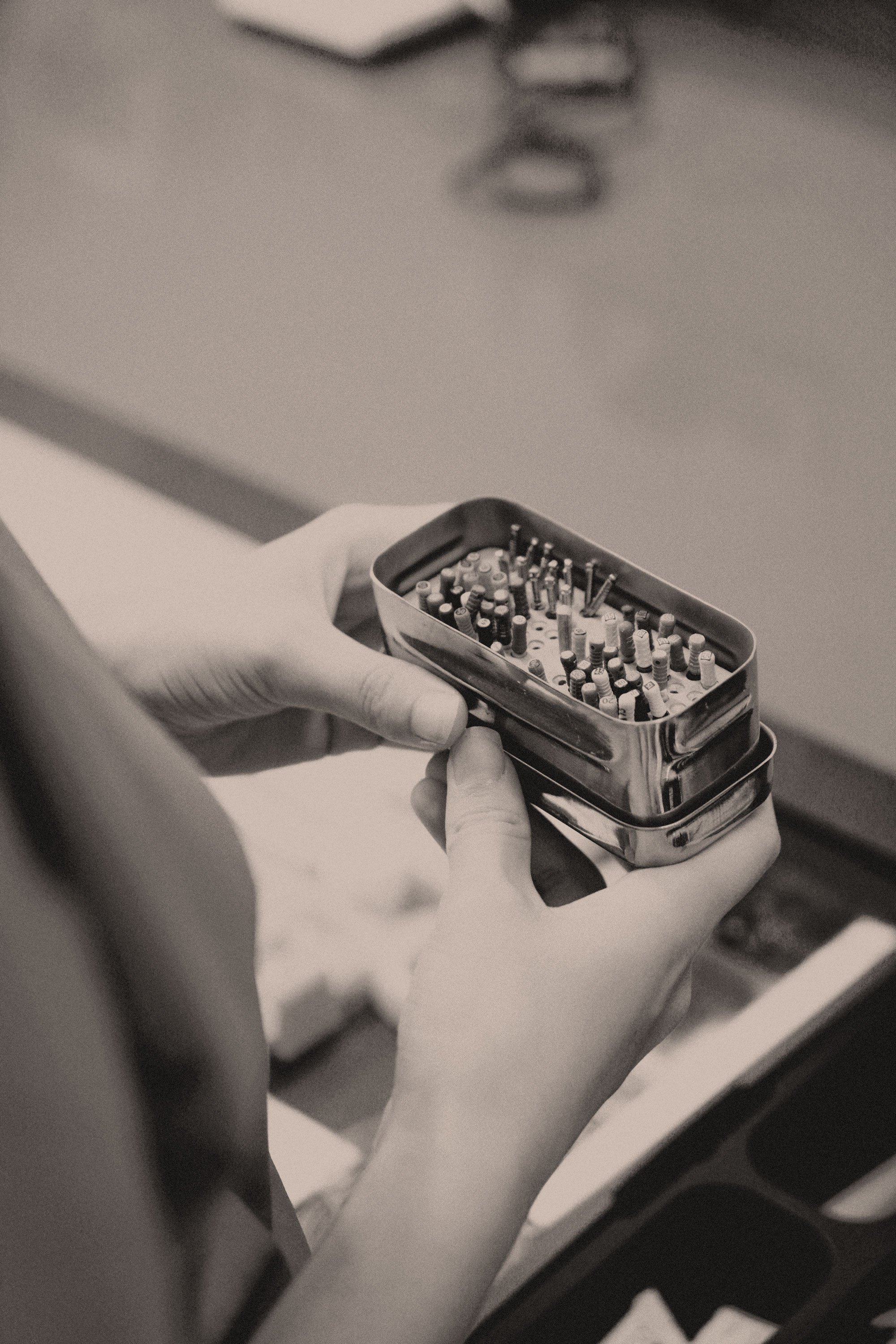
Endodontics
No one likes their nerve to be hit, and this is exactly what endodontics entails. Thanks to modern technology and materials, as well as the expertise of dentists, extracting the nerve(s) from the tooth is no longer as painful as it used to be. However, it is still one of the more complex dental procedures that require great precision, calmness and dedication from the doctor who enters the root of the tooth with needles in order to save it.
-
The endodontic procedure is the treatment of a tooth that has been damaged to the core by caries or mechanically (if there was a tooth fracture or an impact that led to the death of the nerve). In the past, such teeth were extracted, today we try to save them.
The core we are talking about is called the pulp—the soft tissue in the middle of the tooth that contains nerves and blood vessels.
The pulp is protected by dentin, and dentin by enamel, the hardest part of the tooth. Untreated caries will break through the enamel and dentin and reach the pulp, and if even then you avoid going to the dentist, it can lead to granuloma (inflammation of the bone under the root of the tooth), fistula (purulent formation), tooth gangrene and even destroy the jaw bone.
-
Symptoms that may indicate pulpitis:
— tooth sensitivity to sweet, cold and hot
— sharp throbbing pain
— swelling
— bad breath
— fever
— nothingYou read that right—nothing. Unfortunately, inflammation of the pulp can develop without symptoms, without pain, so it is very important to visit the dentist regularly.
-
What does the root canal cleaning procedure look like?
The cleaning of the root canals should be done thoroughly and with quality, otherwise, a new infection and even bigger problems may occur. It includes these six steps:
1. Dental intraoral X-ray with low radiation rate, which is safe even for the youngest patients.
2. Using the apex locator, the length of the root canal is precisely determined and the root apex is found.
3. Under local anesthesia, the pulp chamber is opened and one or more nerves are removed.
4. Root canals are thoroughly disinfected and cleaned.
5. The cleaned canals are filled with gutta-percha, a rubber material that completely fills the cavity and prevents bacteria from entering the tooth.
6. The dentist places a filling or a crown, depending on how damaged the tooth is.
Thanks to the most modern technology, which in addition to the apex locator includes mechanical instrumentation for expanding and cleaning the root canals, the endodontic procedure is greatly shortened, and thus the patient's recovery.
It still does hurt a little when you get homeAlthough the treatment process itself is painless, due to paraformaldehyde numbing of the nerves, there is pain that disappears within a few days. Even after treatment, the immune system still fights the bacteria in the surrounding area of the treated tooth, which can also cause temporary pain.
-
If they are properly treated, these teeth can last a lifetime because they are supplied with nutrients by the surrounding tissue, so they don't even need their own pulp. Although they have no roots, this kind of tooth should be treated like any other, which means regular oral hygiene and examinations.
In the past, root canal treatment lasted for months and required numerous visits to the dentist, while today, thanks to modern technologies and sophisticated equipment, it can be completed in one or two visits. When performed by a skilled and gentle dentist, a procedure that in the past caused great fear of dentists, today is completely painless. Dare we say—even pleasant.
Hodanić Dental Studio is a place where you will receive highly professional service, a place where we will patiently answer all your questions related to dental care and oral health, and most importantly, gently and painlessly resolve your issue.
WORKING HOURS
MON, THU, FRI 8 am—4 om
TUE, WED 1 am—9 pm
SAT, SUN by appointment
CONTACT
hodanic.dental@gmail.com
051 221 283
091 8974 638
Ivana Zajca 4/1, 51500 Krk
Hodanić Dental Studio © 2024
